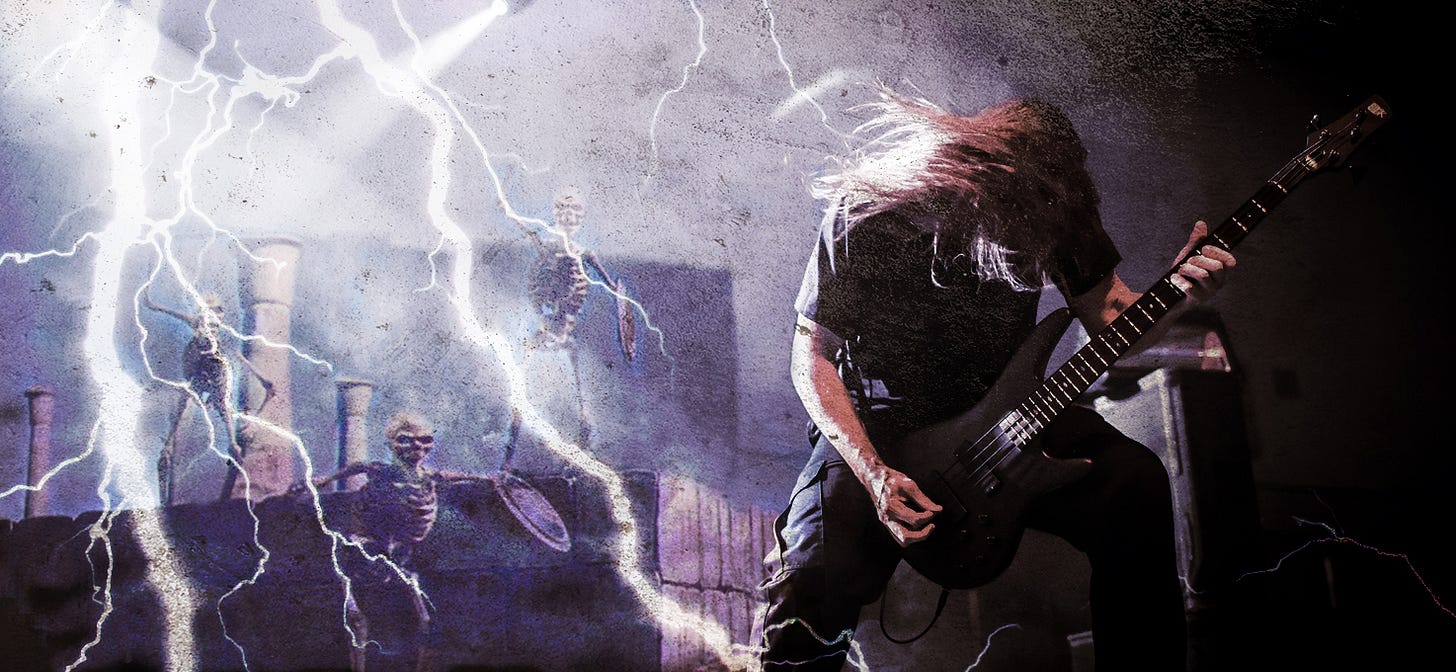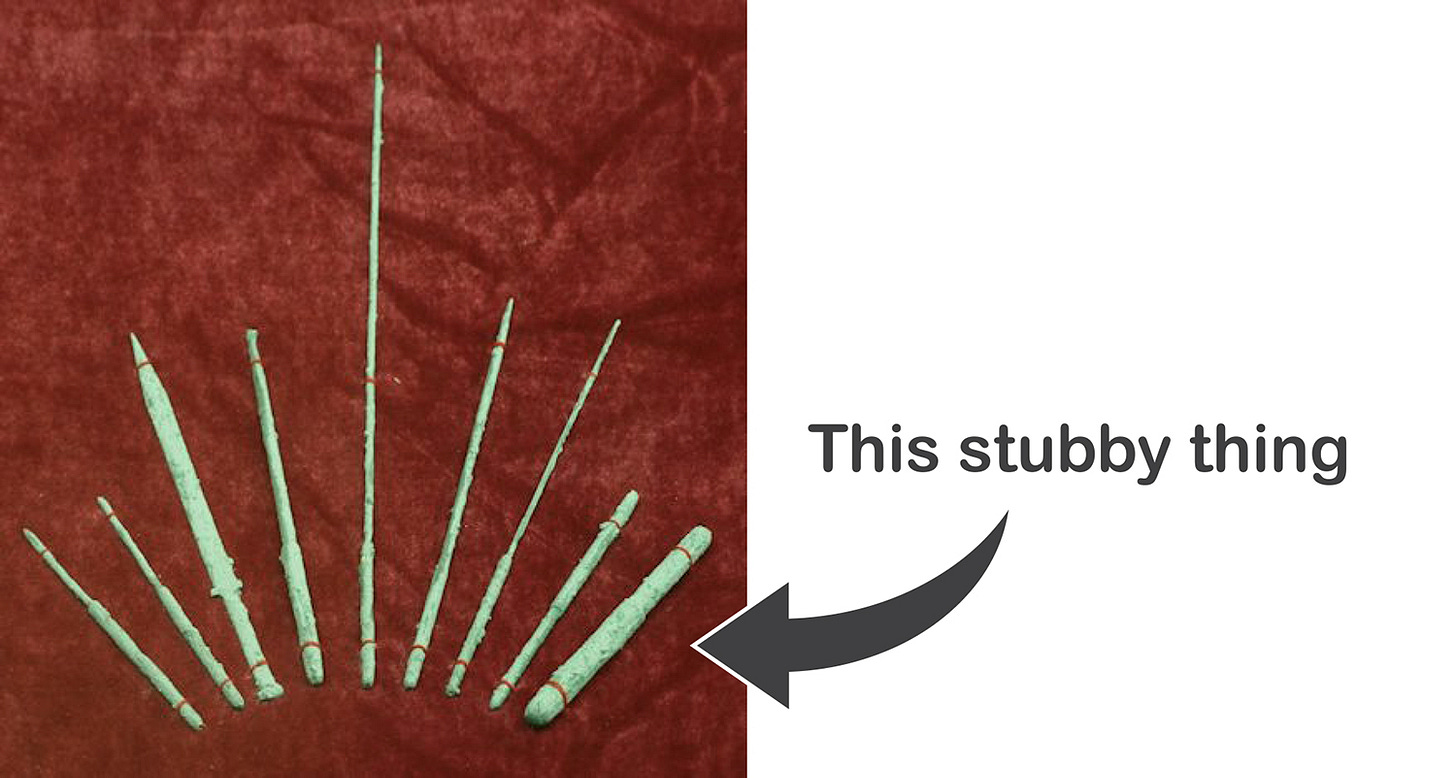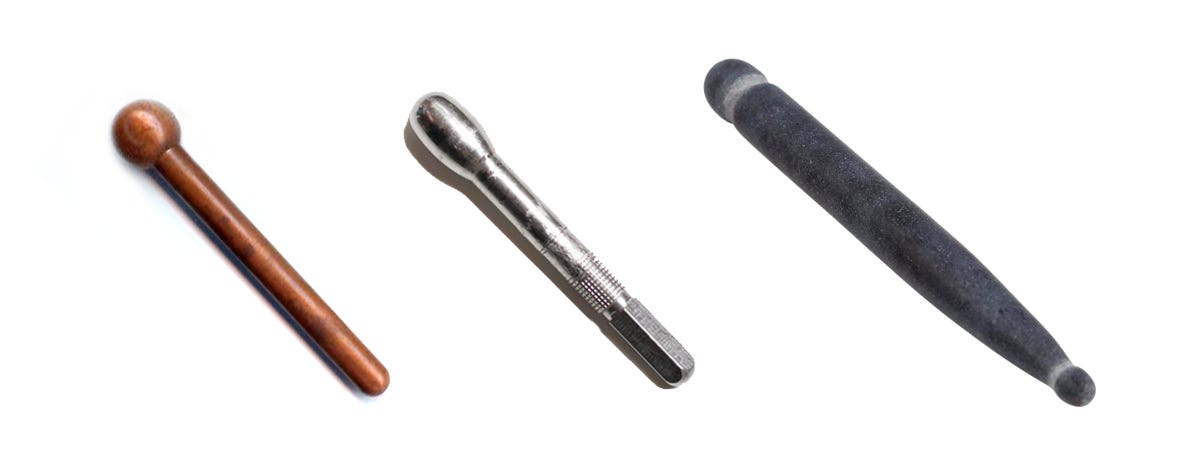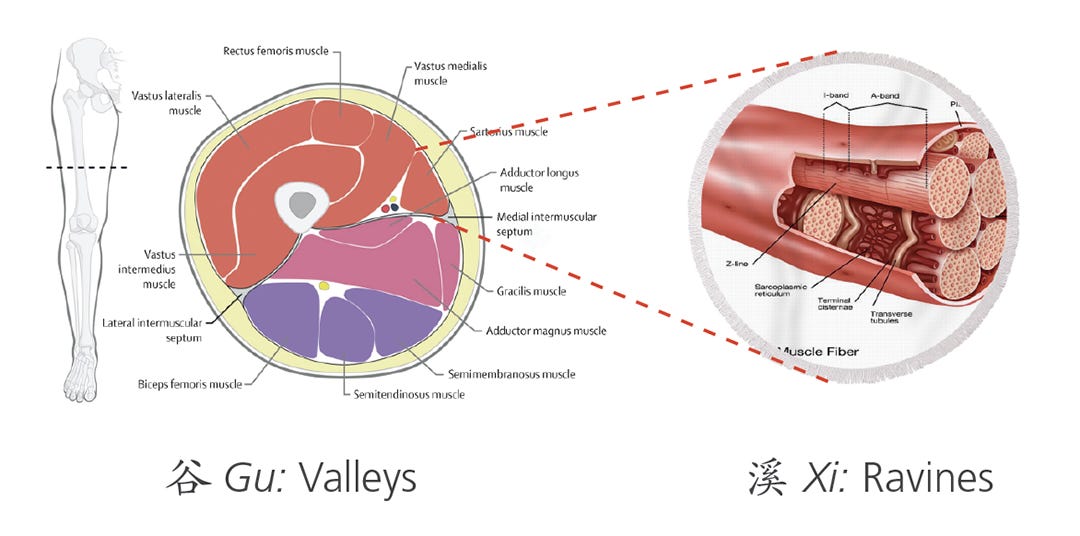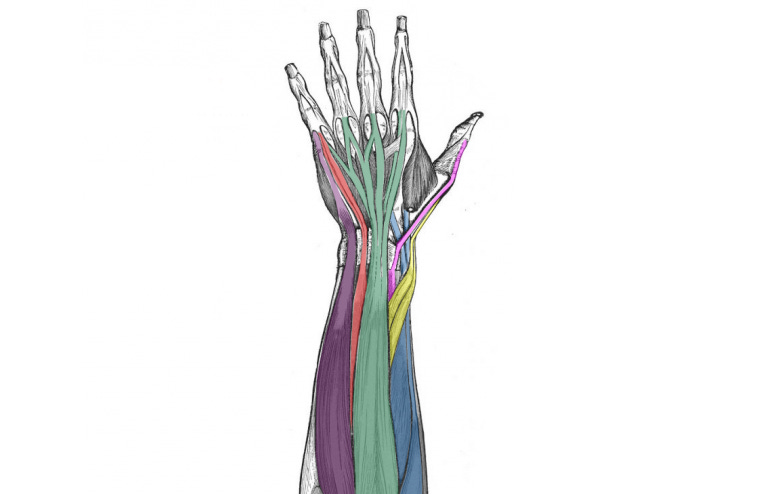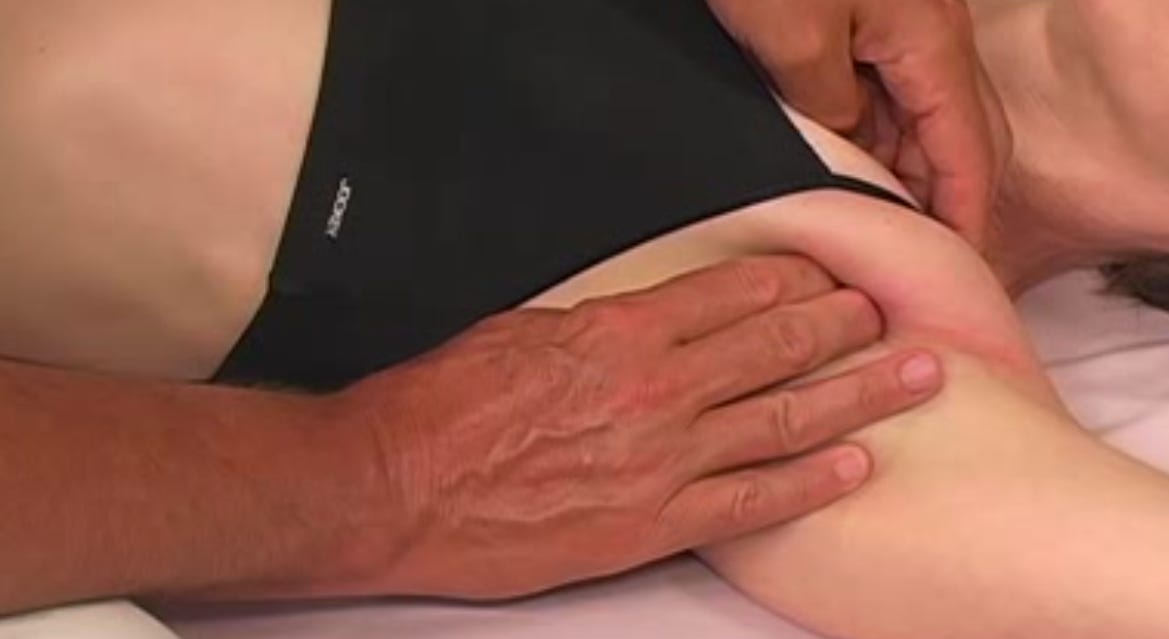Evil and the Divisions of the Flesh! Death Metal Indeed Lives on in the Neijing
An Exploration into the Rounded Needle
Hello everyone, sorry to have been away for so long. I’m like that, drifting in and out on the tide, then once ashore, picked up and randomly blown around like a leaf on a windy day. So very Dao! Actually I’m just lazy. Today was intended to be a short and simple article, but one that packs a tiny little punch. We will be discussing the Rounded Needle (员针 yuán zhēn) from the Neijing Lingshu Chapter 1.
The Rounded Needle
Lingshu Chapter 1 discusses 9 types of classical needles used in treatment. Interestingly, needles 2 and 3 are not literally needles, as neither penetrate the skin. This time around, we’ll be discussing needle 2, the Rounded Needle (needle 3 will have to wait for another day).
The Round Needle is, well, round. Here is a description from Lingshu Chapter 1:
二曰员针,取法于絮针,筒其身而卵其锋, 长一寸六分,主治分间气。
The second is called the Rounded Needle. It is modelled after the needle used for sewing padded fabrics. Its body is a tube. Its tip is egg-shaped. Its length is 1,6 inches. It treats Qi in the divisions of flesh.
Lingshu Chapter 78 essentially repeats the same information:
员针者,针如卵形,揩摩分间,不得伤肌肉,以写分气 。
The Rounded Needle: This needle is shaped like an egg. It is used to massage along the divisions of the flesh. It does not harm the muscles or flesh. It drains Qi from these divisions.
As if the point hasn’t already been made, Suwen Chapter 54 also confirms:
二针肉。
The second needle is for the flesh.
This is what the Rounded Needle looks like:
Assuming you might not be able to find, or even want to use, something similar to what’s in that photo, there are some modern options. The Japanese Enshin for example, you can find them made of wood or metal. Another option might be a Bian Stone probe:
Takeaways:
The second of the nine needles is called the Rounded Needle.
This needle does not pierce the flesh.
An Enshin or Bian Stone Probe can be used.
The Rounded Needle is used to treat the divisions of the flesh.
This treatment removes Qi pathologies from the flesh divisions.
These takeaways should raise a couple of questions:
What are divisions of the flesh?
What kind of Qi pathologies?
OK, but only because you asked so nicely…
Divisions of the Flesh
I’m not musically inclined, but if I was, I would start a Death Metal band and we would be called Divisions of the Flesh.
Flesh is one of the five ‘tissues’ discussed in the Neijing. These include Sinews, Vessels, Flesh, Skin, and Bone. Sinew channels are discussed in detail in Lingshu Chapter 13 (densely packed article on this coming soon). Skin regions are discussed in depth in Suwen Chapter 56 (another densely packed article on this, also coming soon). Blood vessels are discussed in detail throughout the Neijing, but mostly in Lingshu Chapter 10 (in… you guessed it, yet another densely packed article on this, also allegedly coming soon. Ugh, no wonder I keep retreating into oblivion… this is a lot of work!). Bones do not have an in-depth chapter and are just mentioned randomly throughtout the text. Flesh also does not have its own chapter.
There are some interesting references to flesh, however, and more specifically, the divisions of flesh! (Insert death metal riff here.) For example, Suwen Chapter 58, which discusses ‘Ravines and Valleys’ (溪谷 xī gǔ):
肉之大会为谷, 肉之小会为溪,肉分之闲,溪谷之会。
The large meeting points of the flesh are the valleys; the small meeting points of the flesh are the ravines. In the partings of the flesh, are where the ravines and valley meeting points are located.以行荣卫,以会大气。
They are the passage of Ying and Wei and gather large quantities of Qi.
Essentially, divisions of the flesh are muscle septums, the spaces between two muscles compartments. The larger divisions are valleys, while the smaller separations of muscle bundles within a muscle compartment are ravines. If you’re a visual person, here you go… (image below).
Anyone in the field of manual therapy knows this stuff. Flesh divisions are the guiding methodology for separating and naming muscles. In the field of dissection, these divisions are the lines that are typically cut through. In the Daoist philosophical classic Zhuang Zi, Ding the Butcher impressed Lord Wenhui with how gracefully he carved up an ox by cutting along these divisions. Ding even stated that he had been using the same knife for 19 years without it dulling! These are the ‘pathways of least resistance.’
In Chinese medicine physiology, divisions of the flesh, or Xigu (valleys and ravines) are included in the generalized grouping of ‘spaces’ in the body, along with the Sanjiao (triple heater), and the Couli (little spaces). The Sanjiao reflects the inner torso and relates mostly to organ function, the Couli reflect peripheral tissues and relate to the skin and pores, while the Xigu are mostly concerned with the spaces made between muscle structures and relate to the 4 limbs. Regardless, all are all a form of interstitial space in the body.
Here, below, is another image that conveys very clearly the Gu valleys of the limbs (Valleys of the Limbs… Wow, now I need to start 2 bands).
These spaces are easily palpated, even seen, in people with defined muscles. Many of the standard channel pathways follow along these pathways, and many standardized acupuncture points fall into these spaces.
Qi Pathologies in the Divisions of the Flesh
The primary pathology that locates itself in these divisions is EVIL. OK, seriously, before I continue, I think translating Xie 邪 as ‘evil’ is silly, even if it is a literal and commonly-used translation. A better understanding of this situation is that a person is not adapting effectively to an environmental stimuli. It is the opposite of Zheng 正, which means to be harmonized and functioning properly. So a better translation would be maladaptation, or even malapropos. Moving forward I’m going to refer to Xie as maladaptation.
Maladaptation will settle in the body and once there, it commonly manifests as an Obstruction (Bi 痹). In fact, Suwen Chapter 43 has a specific name for Bi when it settles in the divisions of the flesh:
以至阴遇此者为肌痹
In late summer, it is called flesh Bi.痹在于肉则不仁
When Bi occurs in the flesh, then there is numbness.肌痹不已,复感于邪内舍于脾
When muscle Bi is not cured, and one is again affected by maladaptation, the condition will proceed to the interior and lodge in the spleen.脾痹者,四支解墯,发咳呕汁,上为大塞
In the case of spleen Bi, the four limbs are sluggish, there is coughing and vomiting of clear liquid. Above, there is oppression in the chest.
For those of you interested in Bi Obstruction, Suwen Chapter 43 is loaded with information. While this deserves an article of its own, Bi Obstruction as indicated in the Neijing is much more than just local pain. Some forms of Bi, like in the example of Flesh Bi, are not indicated by pain but instead by heaviness and numbness. Also, unresolved Bi can slowly penetrate deeper into the body, eventually affecting complex organ systems. For example, in the case of Flesh Bi, an unresolved condition could find it’s way into the Foot Taiyin system (aka the Spleen).
Takeaways:
Divisions of the Flesh is a great name for a Death Metal band.
Pathology settling into these spaces is called Flesh Bi.
Flesh Bi is generally considered to be a development of environmental maladaptation.
The primary symptom of flesh Bi is numbness and sluggishness of the limbs.
Flesh Bi can penetrate deeper into the body and affect the Foot Taiyin system, leading to symptoms like chest oppression, vomiting, coughing, and overall just feeling phlegmy and gross.
Rounded Needle Treatment Methods
Lingshu Chapter 7 discusses lots of needle techniques—26 of them! One of them relates to using the Rounded Needle. It’s the fifth method in a grouping of nine:
五曰分刺,分刺者,刺分肉之间也。
The fifth method is called Division Needling: Pierce the divisions in the flesh.
A little brief, huh? No mention of HOW to use the Rounded Needle, just to use it. If you search around the internet, you won’t find much. Most of what you might find will be based on the Japanese Enshin method, which is not the same thing.
I was lucky when living in China to meet a doctor who used this method, or at least, his interpretation of it. While I did not get to spend a lot of time observing his practice, I was able to observe enough to get the basic idea. It’s not complicated.
Two treatment methods of the Rounded Needle:
Use the needle to press along muscle septums of affected regions. Each press should be firm but not enough to elicit sharp pain. Hold each press for a count of 3 seconds, then move to the next area to press, usually a few inches further along the path. It’s unnecessary to use standardized acupuncture points.
Apply a topical oil along the affected region. Press and slowly slide the needle along the muscle septum in short 3-5 inch sweeps. Pressure should be firm and consistent, but not elicit sharp pain. Repeat over the same area a few times until the tissue releases.
Both of these methods are essentially myofascial techniques, and could also be done with your hands/fingers if you’re skilled enough. If you’ve studied Thomas Myers Anatomy Trains, much of his hands-on myofascial therapy mirrors the results of the Rounded Needle, in my opinion. If you don’t have strong fingers though, you’re better off using the needle.
So what is happening when you help to separate these divisions of the flesh? Well simply put, you unstick the flesh and create movement. Movement in terms of blood, lymph and fluid circulation, ease of kinetic motion, improved nerve conduction, and more. Opening these divisions frees up the body in many ways, and can have a surprisingly positive effect, even on more complex organ system pathologies. Remember the quote “They (Xigu) are the passage of Ying and Wei and gather large quantities of Qi.” These divisions are like highways, keeping them clear is essential.
Encore! Encore!
Sorry, the concert is over. Hopefully, you’re not leaving with a bad case of tinnitus (more likely a headache and burning eyes). Hopefully some of you will pick yourselves up a Rounded Needle and give it a try. It’s a great alternative when clients’ don’t like needle needles, and while it might not be as cool as hammering a guitar and rage growling inaudible lyrics, you are technically driving EVIL out of your client’s flesh, and that’s as Death Metal as it gets.
The plan is at least one article a month. I’m trying, but sitting in nothingness is just so tempting. Anyhow, I’ve got some news on workshops coming up. Stay ‘tuned’! (Get it? Tuned?)



